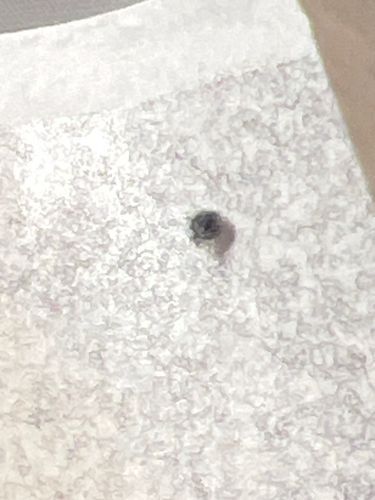Carpet Beetle (likely Varied Carpet Beetle or Black Carpet Beetle)
Scientific Name: Likely 'Anthrenus verbasci' (Varied Carpet Beetle) or 'Attagenus unicolor' (Black Carpet Beetle)
Order & Family: Order: Coleoptera, Family: Dermestidae (Skin Beetles)
Size: 2-5 mm (adults)

Natural Habitat
Indoors, typically found in dark, undisturbed areas such as closets, attics, beneath furniture, in air ducts, and sometimes in bird/rodent nests. They feed on a variety of animal and plant products.
Diet & Feeding
Adult carpet beetles typically feed on pollen and nectar from flowers. Larvae are known to feed on a wide range of organic materials of animal origin, including wool, silk, feathers, fur, leather, animal carcasses, dried pet food, and even dried pasta or cereals. They can also feed on plant-based materials like cotton and linen if stained with food or body oils.
Behavior Patterns
Adult carpet beetles are often attracted to light and may be found on windowsills. The larvae, which are the destructive stage, avoid light and prefer dark, undisturbed places. They are slow-moving and may roll up or play dead when disturbed. Their life cycle can take several months to a year, depending on conditions and species, involving egg, larval, pupal, and adult stages.
Risks & Benefits
Potential risks include significant damage to household items such as carpets, clothing, upholstery, and stored foods made of animal products. They do not bite or transmit diseases to humans or pets, but some people may experience skin irritation (dermatitis) from contact with larval hairs. There are no notable benefits in an indoor setting, though in nature, dermestid beetles play a role as scavengers.
Identified on: 9/22/2025